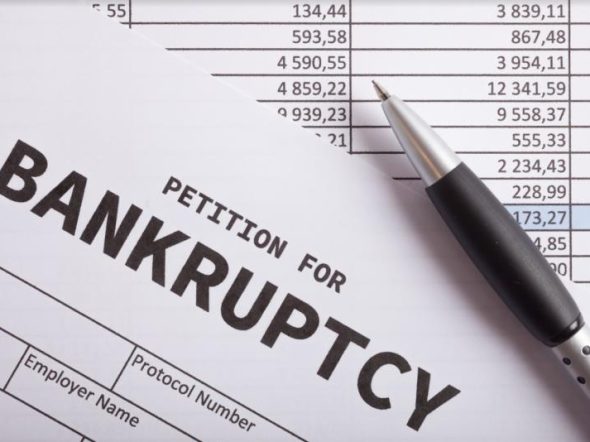Bankruptcy can provide a form of financial rebirth by allowing immediate debt relief via an automatic stay. It enables you to shed the overwhelming debt burden, become wiser, and make better use of your financial resources. For most people who are entirely overwhelmed by debt, filing for bankruptcy provides relief and a fresh financial start. It is a complex process that an individual may need to be better equipped to deal with alone.
Bankruptcy is a legal process that federal bankruptcy courts handle. It can take many months or even years, and it will involve time, energy, and some cash before you can have relief from your debts. Ideally, bankruptcy is aimed at helping businesses or individuals eliminate all or a portion of their debt. It is also meant to create a repayment plan for the amount owed and liquidate some available assets to cover the debts.
When the bankruptcy court issues an automatic stay, it prohibits creditors from contacting you immediately after filing the case. Most United States citizens can file for either Chapter 13 or Chapter 7 bankruptcy. However, Chapter 7, which involves selling off a debtor's unsecured possessions and distributing the money to the creditors, is more common. Some debts, such as child support obligations, student loans, recent tax debts, and alimony, are not covered under bankruptcy. On the other hand, for Chapter 13 bankruptcy, please watch this video to learn more:
In this post, we are going to discuss the main steps to take when filing for bankruptcy. There may be variations depending on your location, so this is just a general outline of the bankruptcy process.
1. Prepare To File
Before you file for bankruptcy, you must consider it your best option. Filing for bankruptcy is complex, and you should determine that you cannot repay your debts in the foreseeable future or under any changing circumstances. Declaring bankruptcy should be the last resort after you have exhausted all the possible ways to get out of debt. You should determine if most of your debts will be discharged for the process to be worthwhile.

What property can I protect in bankruptcy? Find out if you qualify for Chapter 7 bankruptcy, as it will allow the court to seize some of your assets to offset your creditor's demands. Some of your possessions, including your home, professional tools, retirement funds, public benefits, and other personal stuff, are protected against seizure. You can, however, lose other items like an extra home, sports car, high-end jewelry, and large-screen television sets. If you need more income, as Chapter 13 requires, then Chapter 7 is your best option.
2. Hire A Bankruptcy Attorney
Hiring an attorney at this early stage of the journey is crucial as they will help you to know your best option. The attorney will help you to decide whether Chapter 7 is good for you and guide you throughout the journey. Although you could choose to go through the process alone, hiring a lawyer can help plead with the court to settle more debts or protect some of your possessions from seizure.
3. Attend Credit Counseling Sessions
You must complete a mandatory credit counseling session to start a formal bankruptcy process. The course can only be taken at a government-approved institution and should be completed within 180 days of filing for bankruptcy. The system will help you to decide if you still want to file for bankruptcy or choose another option.
4. Complete The Required Paperwork
When filing for bankruptcy, you must fill out a long list of supporting documents. These forms include:
- A list of assets and liabilities
- Current income and expenses
- Debts to include in the bankruptcy
- Existing contracts and unexpired leases
- Exempt assets
- A means test
- Details of creditors
- Debts, including co-signed liabilities and outstanding guarantees
Once you have all these forms, you can file your petition with your credit counseling certificate to the bankruptcy court. You should file your petition with your local court, where your business and most of your assets are located. Upon filing the petition, legal actions by creditors have 'stayed'; thus, they can no longer pursue lawsuits or call you demanding payment.
5. Pay Legal Fees
There are various court costs involved in a bankruptcy petition that you should pay alongside submitting the forms. If your income is less than 150% of your poverty level, then you might get these fees waived. You must provide your trustee with a copy of the most recent paycheck stubs and tax return. A bankruptcy trustee will ensure the filing process goes smoothly, and they are assigned to you upon filing the initial documents.
6. Meet With Your Creditors
A meeting with creditors should be held at least 21 days after the petition signing but not more than 40 days. You must attend this meeting which is also called a 341 meeting, for the creditors to ask you questions about your financial affairs and property. Your bankruptcy trustee will chair the meeting, and you must bring copies of your mortgage, car titles, property deeds, bank statements, tax returns, and pay stubs.
7. Complete A Post-Filing Course
This session is a personal financial management course you must complete within 45 days of meeting with creditors. You can also only attend the class after the petition is filed. It is different from the credit counseling course you took earlier. Please participate in this course to avoid your case being dismissed.
8. Wait To Receive Notice Of Debt Discharge
The final step in filing for bankruptcy is to wait for correspondence that your debts have been eliminated. The time it takes for your debts to be discharged may vary depending on the type of bankruptcy you pursued. You and your creditors will receive a notice that declares that all your debts have been removed. That will be the end of the bankruptcy process.
Bottom Line
Seeking bankruptcy protection is a long, demanding, and complicated process. However, the relief you will get from the burdensome debt is worthwhile. If you have debts that are becoming more than you can bear, bankruptcy can provide you with a way out and a brighter future. Find a reliable bankruptcy attorney for more assistance and professional guidance.
